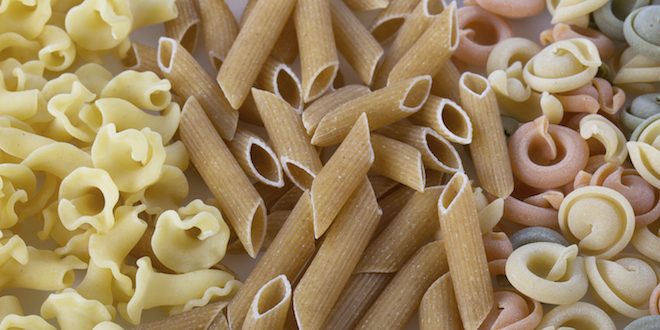Pasta is a kitchen pantry staple. It’s inexpensive, versatile, requires little cooking expertise and it’s delicious. Today’s selection of pasta includes regular pasta made from refined wheat, whole grain pasta, gluten-free pasta, flavoured pasta and pasta made with grains other than wheat; some varieties offer a combination of two or more grains.
Which is the best one to choose?
Unlike shopping for other grain products, shopping for healthy pasta products is actually quite simple. Avoid the pre-packaged side dish products that come with the pasta and sauce combined; these are higher in sodium. Aside from that, the healthy choices are endless. Don’t worry about the shape of the pasta. Everything from long, thin spaghetti to small, curvy elbow pasta offers the same nutritional value. It’s just a matter of preference.
As with any food, portion size is important. To keep the carbohydrate count in check, keep your portion of cooked pasta to within your carbohydrate budget for the meal. On average, each ½ cup of cooked pasta contains about 15 grams of available carbohydrate (check the nutrition facts table on the package for more accurate information).
Large portions of pasta can contribute to high blood sugar levels and weight gain. Adding lots of vegetables to your cooked pasta can make the portion seem larger, while providing added fibre, nutrition, flavour and texture. Colourful flavoured pastas contain vegetables such as spinach; however, there is no added benefit to choosing these, since the actual amount of vegetables in a serving is negligible.
To reduce the impact that pasta has on your blood sugar, be sure to cook it “al dente,” which means it’s still firm to the bite, and not soft and overcooked. Pasta that is cooked al dente has a lower glycemic index than pasta that is cooked until it’s soft. Carbohydrate foods with a lower glycemic index don’t raise blood sugar levels as high as foods that have a higher glycemic index. (For more information about the glycemic index, click here.)
Traditional pasta is made with semolina flour, which comes from refined wheat. We now have the choice of whole grain pasta, which offers the added benefit of increased fibre – up to 6 grams per serving, compared with up to 2 grams found in most traditional pastas. Look for the brand with the highest amount of fibre and be sure the label says “whole grain.” You may need to try a few different brands until you find the one that best suits your taste buds. If you’re not ready to make the leap to whole grain pasta, you can make a gradual change by introducing pasta made from a combination of whole wheat and traditional semolina. It looks and tastes more like traditional pasta, but offers additional fibre.
If you have a sensitivity or intolerance to gluten, gluten-free options are available. Check that they have been processed in a dedicated gluten-free facility that has not been contaminated with gluten-containing grains. You don’t have to have a problem with gluten to enjoy these, either.
If fresh pasta is more your style, check the label for the amount of fat, sodium and calories. However, some store-made or local freshly made pasta may not have a nutrition label. Look for the whole grain variety in these products as well.
For topping off your pasta, there are many options! The healthiest offerings include a drizzle of olive oil or a low-sodium, tomato-based, homemade sauce such as marinara. Don’t forget to add some vegetables, such as broccoli, carrots, zucchini or red pepper.
The next time you’re in the pasta aisle of the grocery store, take a minute to explore the variety of options available. Try something new, such as a whole grain or mixed-grain product. Cook it al dente, check your portion size and top it off with your favourite sauce and some vegetables.
Bon appétit!
To learn about other healthier choices while food shopping, check out Navigating the grocery store expert blogs by Dietitian and Certified Diabetes Educator, Joanne Lewis.
 Diabetes Care Community Learn, connect and care
Diabetes Care Community Learn, connect and care




